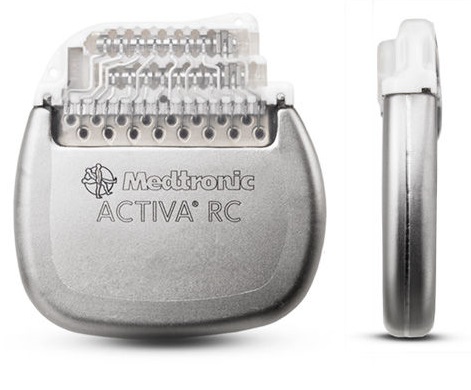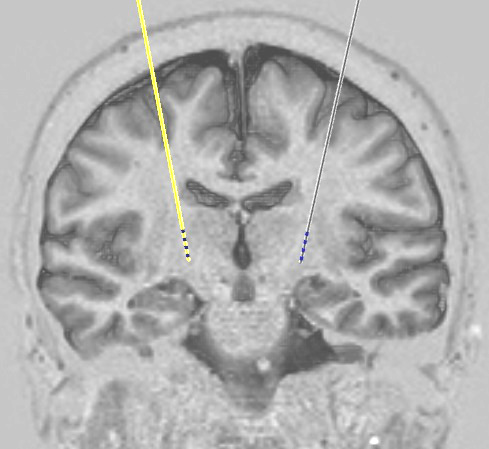Types of Implantable Pulse Generator (IPG) battery
The IPG is the 'box' that contains the battery to power the stimulator system together with some circuitry to produce the required small electrical pulses. It is usually implanted under the skin below the collar bone for DBS systems and under the skin at the front of the abdomen for SCS systems.
Two main types of IPG are available:
- Rechargeable
- Non-rechargeable
With a non-rechargeable IPG, the battery usually lasts in the region of two to four years, depending on how high your settings are (i.e. how much current it is delivering). When the battery is running out the IPG has to be surgically replaced. The old IPG is disconnected from the leads and thrown away, and replaced with a new one. This is usually done as a day case, although some people need a night in hospital afterwards.
With a rechargeable IPG you have to charge it usually every few days. Exactly how often this is necessary depends on your settings. Charging is a simple and painless process done magnetically using a charger that is placed on the skin over the IPG. You are required to sit reasonably still while charging but can do things such as read or watch television.
 An example of a rechargeable IPG *
An example of a rechargeable IPG *Pros and cons of each type
Both types of IPG have advantages and disadvantages. The rechargeable devices reduce the need for replacement surgery, although they do not eliminate it completely. Non-rechargeable batteries require replacement every few years, while a rechargeable might last almost a decade. Rechargeables are also smaller and therefore less obvious under the skin, which can be an important consideration for some people.
The advantage of the non-rechargeable devices is that once fitted, you can forget about them until they need to be replaced. This can be an important consideration for some patients who find the recharging procedure difficult.
All other things being equal, we will usually suggest a rechargeable IPG because of the reduction in the number of battery replacement surgeries required over the years.
* Image courtesy of Medtronic
Copyright OFN Tuesday, 10 February, 2015.













